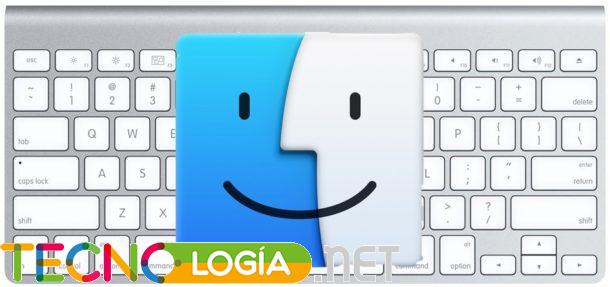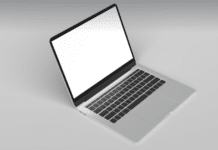On another occasion, we already talked about all the keyboard shortcuts for Windows 10 that every user who uses this operating system should know. Now it's Apple's turn, with the keyboard shortcuts for mac. We have prepared a list with the most important key combinations, to make your life easier, and to perform any daily action more comfortably and quickly. Without a doubt, you will have the opportunity to finally master your MAC.
Essential Mac Keyboard Shortcuts
We have extracted all the information for these commands from the support of Apple's official website. They can be used on any keyboard and Mac computer.
These are some of the most common functions that all of us use in our daily lives to work with Mac. They are essential since they allow us to: copy, paste, cut, select, undo and perform all kinds of common actions, both when working and during leisure time.
- Command-X: Cut the selected item and copy it to the Clipboard.
- Command-C: Copy the selected item to the Clipboard. This also works with Finder files.
- Command-A: select all elements.
- V-Command- Paste the contents of the Clipboard into the active document or app. This also works with Finder files.
- Command-Z: undo the previous command. You can then press Shift-Command-Z to Redo, this will reverse the Undo command. In some apps, you can undo and redo several commands.
- Command-P: print the active document.
- Command-S: save the active document.
- Command-T: open a new tab.
- Command-F- Find items in a document or open a search window.
- Command-G: search next, that is, search for the next occurrence of the previously searched item. To find the previous occurrence, press Shift-Command-G.
- Command-H- Hide foreground app windows. To see the app in the foreground and hide other apps, press Option-Command-H.
- Command-M- Minimize the window in the foreground of the Dock. To minimize all app windows to the foreground, press Option-Command-M.
- Command-O- Open the selected item, or open a dialog box to select the file to open.
- Command-W: Close the foreground window. To close all app windows, press Option-Command-W.
- Option-Command-Esc: Force quit an app.
- Command-Space bar- Show or hide the Spotlight search field. To perform a Spotlight search from a Finder window, press Command-Option-Spacebar. (If you use multiple input sources to type in different languages, these shortcuts change them instead of displaying Spotlight. Learn how to change a conflicting keyboard shortcut.)
- Control-Command-Spacebar- Display the Keyboard Viewer, from which you can select emoji and other symbols.
- Control-Command-F: use the app in full screen if it allows it.
- Space bar- Use Quick Look to see the preview of the selected item.
- Command-Tab: Switch to the most recently used app among the apps you have open.
- Shift-Command-5– In macOS Mojave or later, take a screenshot or start a screen recording. You can also use Shift-Command-3 or Shift-Command-4 for screenshots. Learn more about screenshots.
- Shift-Command-N: Create a new folder in Finder.
- Command-Comma (,)- Open the preferences of the app in the foreground.

Keyboard shortcuts for Finder and System
These keyboard shortcuts for Mac are combinations that are related to Finder and System. You probably don't know many of them yet, we encourage you to practice them as they will be very useful to you.
- Command-D- Duplicate the selected files.
- Command-E: Eject the selected disk or volume.
- Command-F- Start a Spotlight search in the Finder window.
- Command-I- Display the Get Information for a Selected File window.
- Command-R: (1) When an alias is selected in the Finder: show the original alias file. (2) In some apps, such as Calendar or Safari, refresh or reload the page. (3) In Software Update preferences, check again for software updates.
- Shift-Command-C- Open the Computer window.
- Shift-Command-D: Open the Desktop folder.
- Shift-Command-F- Open the Recent window, where you can see all the files you have recently opened or modified.
- Shift-Command-G- Open the Go to Folder window.
- Shift-Command-H- Open the home folder of the active macOS user account.
- Shift-Command-I- Open iCloud Drive.
- Shift-Command-K: Open the Network window.
- Shift-Command-L- Open the Downloads folder.
- Shift-Command-N: create a folder.
- Shift-Command-O- Open the Documents folder.
- Shift-Command-P- Show or hide the preview pane in Finder windows.
- Shift-Command-R- Open the AirDrop window.
- Shift-Command-T- Show or hide the tab bar in Finder windows.
- Control-Shift-Command-T- Add the selected Finder item to the Dock (OS X Mavericks or later).
- Shift-Command-U: Open the Utilities folder.
- Shift-Command-D: Show or hide the Dock.
- Shift-Command-T- Add the selected item to the sidebar (OS X Mavericks or later).
- Shift-Command-P- Hide or show the path bar in Finder windows.
- Shift-Command-S- Hide or show the sidebar of Finder windows.
- Command-Slash (/)- Hide or show the status bar of Finder windows.
- Command-J: show display options.
- Command-K- Open the Connect to Server window.
- Command-L: create an alias of the selected item.
- Command-N- Open a new Finder window.
- Option-Command-N- Create a Smart Folder.
- Command-T– Show or hide the tab bar when only one tab is open in the active Finder window.
- Option-Command-T– Show or hide the toolbar when only one tab is open in the active Finder window.
- Option-Command-V– Move, that is, moves the Clipboard files from their original location to the current location.
- Command-Y- Use Quick View to preview selected files.
- Option-Command-Y- View a Quick View slideshow with the selected files.
- Command-Down Arrow: Open the selected item.
- right arrow: open the selected folder. This only works with list view.
- Left arrow: close the selected folder. This only works with list view.
- Command-Delete: Move the selected item to the trash.
- Shift-Command-Delete: empty the trash.
- Option-Shift-Command-Delete- Empty the Trash without a confirmation box appearing.
- Command-Brightness Up: Activate or deactivate the target screen mode.
- Command-Lower brightness- Turn video mirroring on or off when your Mac is connected to more than one display.
- Command-Left Bracket ([): go to the previous folder.
- Command-Right Bracket (]): go to the next folder.
- Command-Up Arrow: Open the folder containing the current folder.
- Command-Control-Up Arrow- Open the folder containing the current folder in a new window.
- Option-Increase brightness- Open the Displays preferences pane. This works with any brightness key.
- Control-Increase brightness o Control-Lower brightness: Modify the brightness of the external screen, if the screen allows it.
- Option-Shift-Brightness Up o Option-Shift-Brightness Down: Adjust the screen brightness in smaller intervals. Add the Control key to this shortcut to make the adjustment on the external display, if the display allows it.
- Option-Mission Control- Open Mission Control preferences.
- Command-Mission Control: show the desktop.
- Control-Down Arrow- Show all app windows in the foreground.
- Option-Volume up: Open sound preferences. This works with any of the volume keys.
- Option-Shift-Volume Up o Option-Shift-Volume Down: Adjust the sound volume in smaller steps.
- Option-Increase keyboard brightness- Open keyboard preferences. This works with any brightness key on the keyboard.
- Option-Shift-Increase keyboard brightness o Option-Shift-Lower keyboard brightness: Adjust the keyboard brightness in smaller intervals.
- Option key while double clicking- Open the item in another window and close the current window.
- Command key while double-clicking- Open a folder in another tab or window.
- Command key while dragging to another volume: move the dragged item to another volume instead of copying it.
- Option key while dragging: copy the dragged element. The pointer changes as you drag the item.
- Option-Command while dragging: create an alias of the dragged item. The pointer changes as you drag the item.
- Command-1: see the elements of the Finder window like icons.
- Command-2- View items in a Finder window as a list.
- Command-3- View the items in a Finder window in columns.
- Command-4- View items in a Finder window in a gallery.
- Option-Click on a disclosure triangle- Open all folders in the selected folder. This only works with list view.
- Command-Click on a window title- View the folders that contain the active folder.
Keyboard shortcuts for documents
When we are working with documents on our Mac, keeping in mind some shortcuts for actions that we continually repeat, can be very useful to save time, and go directly to what interests us without having to use the mouse.
- Command-B- Make the selected text bold, or turn bold on or off.
- Command-I: Italicize the selected text, or turn italics on or off.
- Command-K: add a web link.
- Command-U: Underline selected text, or turn underlining on or off.
- Command-T- Show or hide the Fonts window.
- Command-D- Select the Desktop folder from the Open or Save dialog boxes.
- Control-Command-D: show or hide the definition of the selected word.
- Shift-Command-colon (:)- Display the Spelling and Grammar window.
- Command-Semicolon (;): Search for misspelled words in the document.
- Option-Delete- Delete the word to the left of the insertion point.
- Control-H: Delete the character to the left of the insertion point. You can also use Delete.
- Control-D: Delete the character to the right of the insertion point. You can also use Fn-Delete.
- Fn-Delete: delete on keyboards that do not have the delete key. You can also use Control-D.
- Control-K- Delete text between the insertion point and the end of the line or paragraph.
- Command-Up Arrow: move the insertion point to the beginning of the document.
- Command-Down Arrow: move the insertion point to the end of the document.
- Command-Left Arrow: Move the insertion point to the start of the active line.
- Command-Right Arrow: Move the insertion point to the end of the active line.
- Option-Left Arrow: move the insertion point to the beginning of the previous word.
- Option-Right Arrow: move the insertion point to the end of the next word.
- Shift-Command-Up Arrow: Select the text between the insertion point and the beginning of the document.
- Shift-Command-Down Arrow- Select the text between the insertion point and the end of the document.
- Shift-Command-Left Arrow: Select the text between the insertion point and the start of the active line.
- Shift-Command-Right Arrow- Select the text between the insertion point and the end of the active line.
- Shift-Up Arrow- Expand the text selection to the nearest character located in the same horizontal location as the line above.
- Shift-Down Arrow- Expand the text selection to the nearest character located in the same horizontal location as the line below.
- Shift-Left Arrow- Expand the text selection one character to the left.
- Shift-Right Arrow- Expand the text selection one character to the right.
- Fn-Up Arrow: previous page, that is, scroll up one page.
- Fn-Down Arrow: next page, that is, scroll down one page.
- Fn-Left Arrow: start, that is, move to the beginning of a document.
- Fn-Right Arrow: end, that is, move to the end of a document.
- Option-Shift-Up Arrow: Expand the selection to the beginning of the active paragraph and, if pressed again immediately, to the beginning of the next paragraph.
- Option-Shift-Down Arrow: Expand the selection to the end of the active paragraph and, if pressed again, to the end of the next paragraph.
- Option-Shift-Left Arrow: Expand the selection to the beginning of the active word and, if pressed again, to the beginning of the next word.
- Option-Shift-Right Arrow: Expand the selection to the end of the active word and, if pressed again immediately, to the end of the next word.
- Control-A: move to the beginning of the line or paragraph.
- Control-E: move to the end of the line or paragraph.
- Control-F: move forward one character.
- Control-B: go back one character.
- Control-L: Center the cursor or selection in the visible area.
- Control-P: move up one line.
- Control-N: move down one line.
- Control-O: Insert a new line after the insertion point.
- Control-T- Swap the character after the insertion point with the character in front of the insertion point.
- Command-Opening Curved Braces ({): align to the left.
- Command-Closing Curved Braces ({): to align to the right.
- Shift-Command-Vertical bar (|): align to center.
- Option-Command-F: go to the search field.
- Option-Command-T- Show or hide an app toolbar.
- Option-Command-C: copy style, that is, copy the formatting settings of the selected item to the Clipboard.
- Option-Command-V: paste style, that is, apply the copied style to the selected item.
- Option-Shift-Command-V: paste with the same style, that is, apply the style of the content that surrounds it to the pasted item.
- Option-Command-I- Show or hide the inspector window.
- Shift-Command-P: set page, that is, display a window to select document settings.
- Shift-Command-S- Display the Save As dialog box, or duplicate the active document.
- Shift-Command-Minus sign (-): reduce the size of the selected item.
- Shift-Command-Plus Sign (+): increase the size of the selected item. Command-Equal sign (=) performs the same function.
- Shift-Command-Question Mark (?): Open the Help menu.







